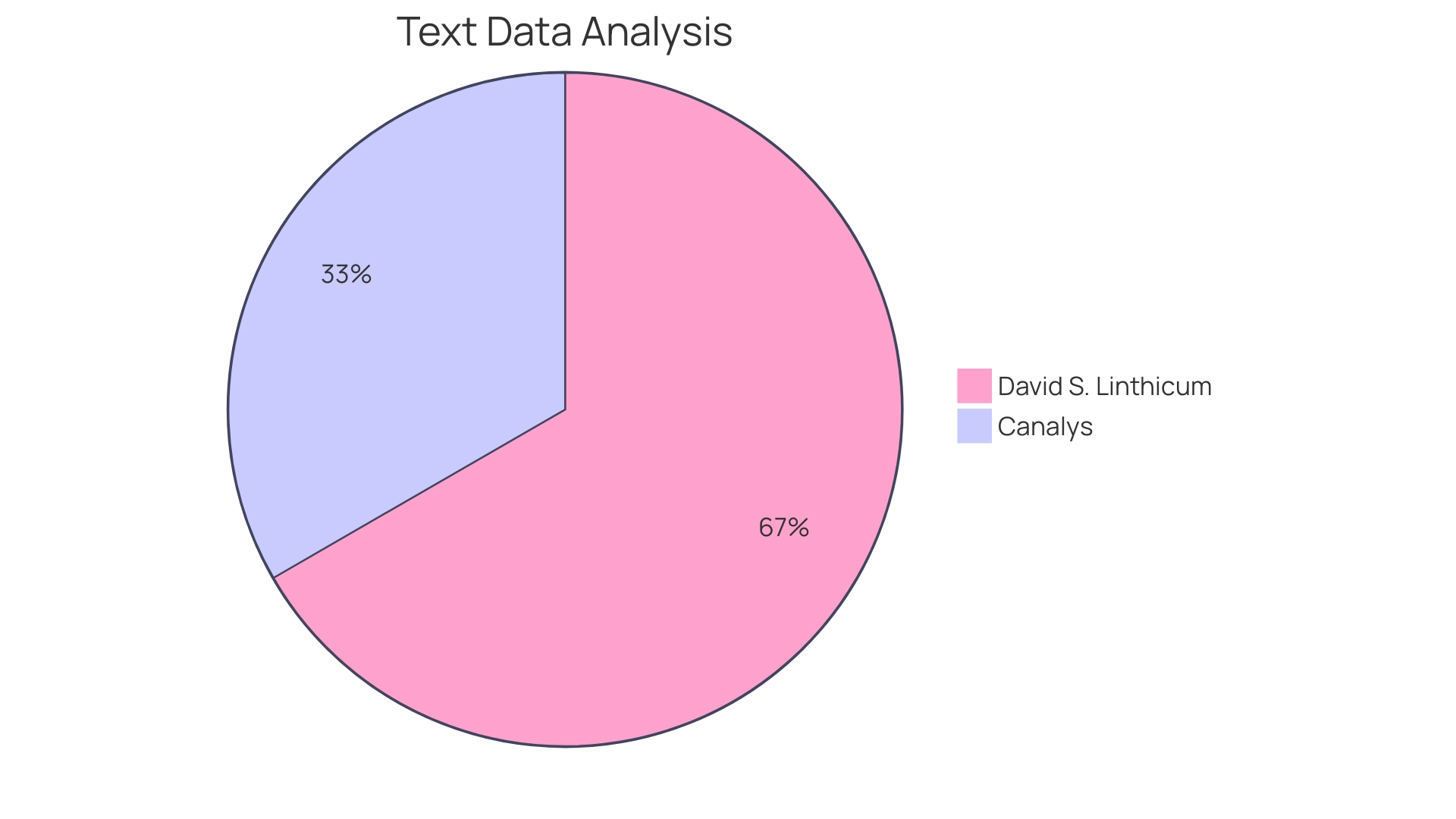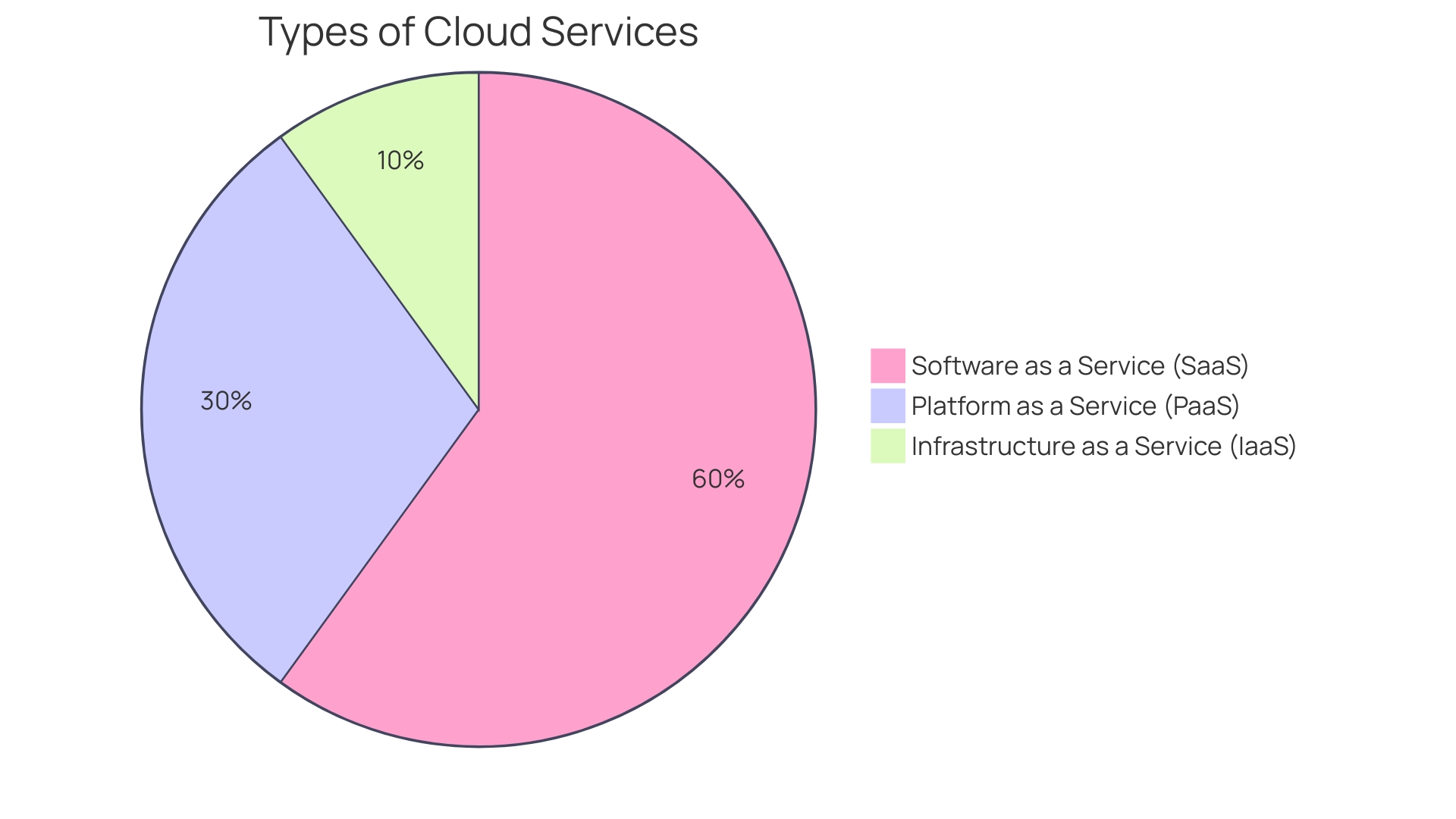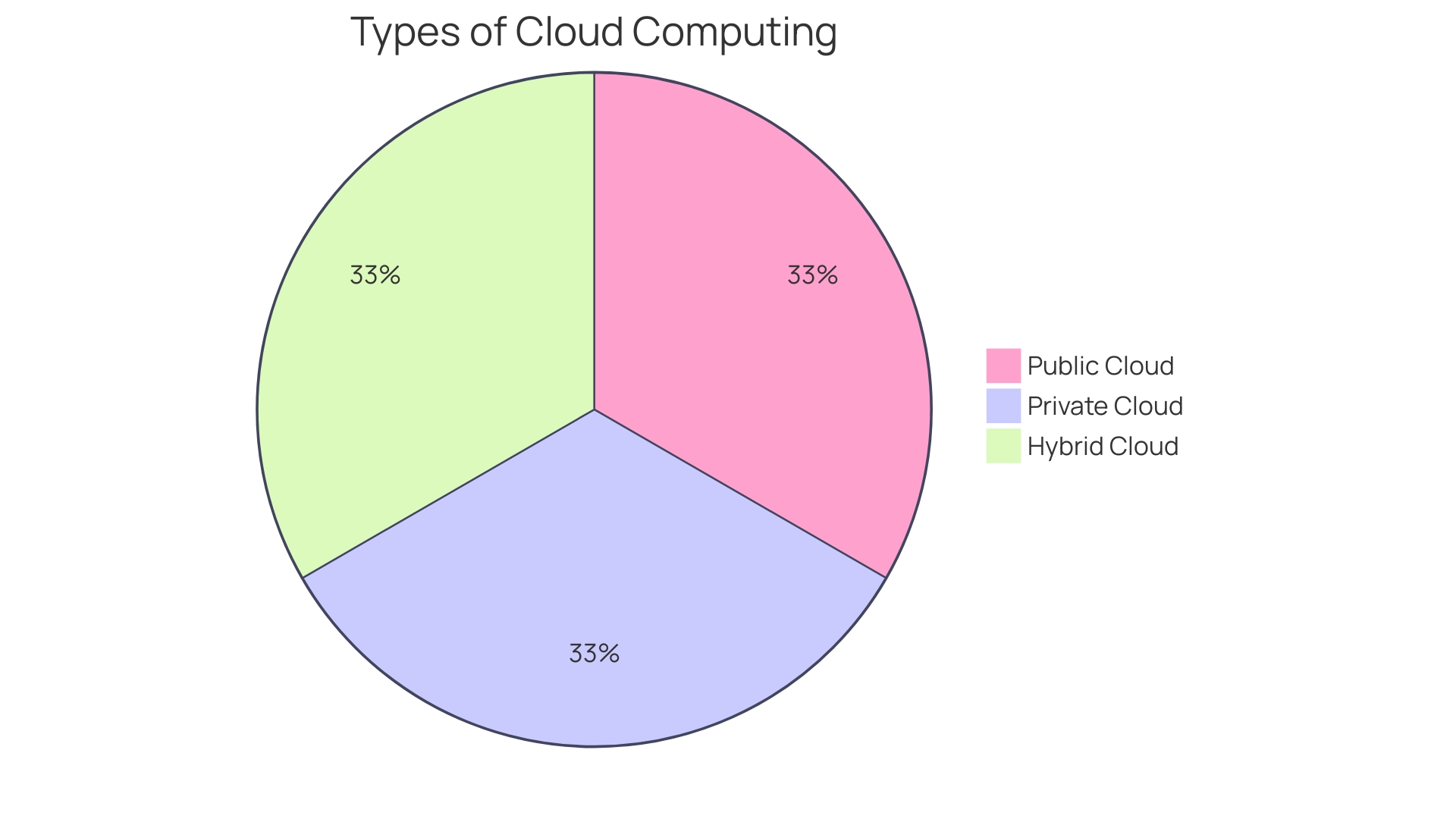Introduction
Cloud computing has revolutionized the way businesses utilize technology, offering various service models to cater to different needs. Three key models are Infrastructure as a Service (IaaS), Platform as a Service (PaaS), and Software as a Service (SaaS).
IaaS provides businesses with virtualized computing resources, allowing them to rent essential infrastructure elements such as virtual machines, storage, and networking from a cloud service provider. This model offers cost savings and flexibility, as organizations only pay for the resources they consume.
PaaS takes abstraction to the next level, providing developers with a sandbox environment to build and deploy applications without the hassle of managing underlying hardware. This model allows for rapid development and scalability, making it ideal for organizations focusing on application development rather than infrastructure management.
SaaS delivers software applications over the internet, freeing users from the need to purchase, install, and maintain software. It provides easy access to applications via web browsers or specialized apps, allowing organizations to focus on their core functions.
Each model has its advantages and disadvantages. IaaS offers cost savings and scalability but requires more management effort from customers. PaaS streamlines application development but limits control over the underlying infrastructure.
SaaS provides ready-made applications but limits customization options.
The choice between these models depends on an organization's specific requirements and existing IT investments. Cloud adoption is on the rise across industries, driven by the need for operational resilience and digital transformation. Selecting the right cloud service model is crucial for businesses to remain competitive in the evolving market.
What is IaaS (Infrastructure as a Service)?
Infrastructure as a Service (IaaS) offers a streamlined approach to cloud computing, delivering virtualized computing resources via the internet. This model enables businesses to eschew the complexities and expenditures associated with physical hardware by renting essential infrastructure elements such as virtual machines, storage, and networking from a cloud service provider. With IaaS, organizations only pay for the resources they consume, aligning their infrastructure costs directly with their usage patterns.
Consider the case of IFCO, a company with a modest IT department that sought to transition to cloud services without the burden of managing a large-scale infrastructure. They partnered with Rackspace Technology to tap into the expertise and customer-centric solutions that the provider offered. Rackspace's ability to offer insightful alternatives and its emphasis on customer needs were key factors in their selection.
Chess.com, the world's premier chess platform with over 150 million users, leverages IaaS to support its mission of nurturing the growth of chess globally. The platform has successfully scaled its IT infrastructure to accommodate millions of daily games, utilizing cloud services to seamlessly connect players from various regions without the need for extensive on-premises solutions.
The trend towards IaaS is also evident in the broader market, where IT spending on building cloud computing systems now constitutes a substantial portion of the budget. This shift indicates a growing reliance on external infrastructure and services, as noted in industry analyses and reports such as those from Uptime Intelligence.
Moreover, the rapid digital transformation across industries, combined with the increasing adoption of IoT, 5G, Machine Learning, and AI, is propelling the demand for cloud services. Government initiatives are further bolstering this trend, particularly among SMEs, highlighting the pivotal role of IaaS in enabling businesses to operate efficiently and adapt rapidly to changing market environments.

What is PaaS (Platform as a Service)?
Platform as a Service (PaaS) is revolutionizing application development, as it abstracts and automates many aspects of hardware management, enabling developers to focus on their core product without worrying about infrastructure. Leveraging PaaS offers a robust environment for building, testing, and deploying applications seamlessly in the cloud. This is exemplified by Bosch's implementation of their solid oxide fuel cell (SOFC) system, which benefits from a PaaS-backed digital twin to monitor and optimize performance.
Indeed, organizations are increasingly adopting cloud services, with spending on cloud infrastructure surpassing traditional IT investments. PaaS, a crucial segment of this trend, allows for the development and hosting of applications with greater ease than ever before. Unlike Infrastructure as a Service (IaaS), which provides the raw compute, storage, and network resources, PaaS delivers the suite of tools necessary for sophisticated software development.
Companies like IFCO have reaped the benefits of PaaS, particularly when resources are limited. By partnering with established PaaS providers, they have managed to scale their IT capabilities and improve service delivery. Similarly, Sirius Technologies leveraged a PaaS solution for Cloud Development Environments, bolstering productivity and facilitating global collaboration in financial services.
The versatility of PaaS is also evident in its accessibility through various models: a dedicated service from a cloud provider, a private service behind a firewall, or software deployed on public infrastructure. These avenues allow for tailored approaches to PaaS, fitting diverse organizational needs and scenarios.
As the Linux Foundation Research indicates, cloud adoption, including PaaS, is broad and growing, with a significant increase in participation from diverse industries and global regions. With the top three cloud providers—AWS, Microsoft Azure, and Google Cloud—dominating the market, it's clear that PaaS is a cornerstone of today's IT landscape, driving innovation and efficiency across sectors.

What is SaaS (Software as a Service)?
Software as a Service (SaaS) epitomizes a cloud computing paradigm where applications are provided over the internet, and users subscribe to the service instead of purchasing and installing software. This model offers a wealth of benefits, such as negating the need for physical installations and ongoing maintenance. The service provider hosts the software, ensuring it is readily accessible to users via web browsers or specialized apps, effectively freeing organizations from the complexities of managing servers, databases, and updates.
For a practical understanding, consider the SaaS model akin to a subscription-based media service like Netflix, which allows access to content for a fixed period upon payment. This reflects the essence of SaaS – temporary access to software in exchange for periodic fees, with the cycle resetting after each term.
In the context of market dynamics, the European IT Services Market, which includes SaaS, has demonstrated resilience and growth even amid economic downturns, reaching an estimated value of $389.26 billion in 2022. The market is expected to maintain its growth trajectory, driven by the need for enhanced operational resilience and increased investments in digital transformation.
Reflecting on the evolution of technology, industry experts have noted a shift from viewing cloud as a mere location to an operating model that can be deployed anywhere, including on-premises and at the edge. This has largely dispelled earlier concerns about performance, security, and reliability. As John Dinsdale of Synergy Research Group articulates, emerging technologies like generative AI are expected to invigorate enterprise spending on cloud services, indicating a stabilizing growth pattern for cloud computing.
Moreover, the narrative of technology use is shifting towards greater transparency and democratization, as observed in the consumer market. Advances in technology are anticipated to enhance information and data flow transparency, with decentralized systems like Ethereum gaining popularity post-pandemic, suggesting a growing interest in decentralized critical systems.
Ultimately, while cloud computing offers myriad advantages, including cost savings on capital expenses, it also brings the potential for unforeseen operating costs. Users benefit from a pay-as-you-go model, similar to renting a computer at a cybercafe, where all concerns regarding purchase, protection, and running costs are managed by the cloud provider. This modern approach to computing resources aligns with the strategic needs of businesses to remain agile and cost-efficient in today's competitive landscape.
Key Differences Between IaaS, PaaS, and SaaS
Cloud computing stands as a paradigm shift in how companies utilize technology, offering various service models that cater to different needs. Infrastructure as a Service (IaaS) presents a virtualized computing infrastructure, akin to renting a powerful computer via the internet, which is a boon for businesses that seek control while avoiding the capital expenditure of physical servers. This model was illustrated when Vodafone transitioned from a physical customer service model to a cloud-based one, enhancing customer experience and reducing the workforce needed to maintain their IT infrastructure.
Platform as a Service (PaaS) offers a level up in abstraction, providing developers with a sandbox in which to build and deploy applications without the overhead of managing the underlying hardware. This model is exemplified by NVIDIA Inception, which supports startups through access to advanced platforms for rapid development, eschewing the need to invest in their own infrastructure.
Software as a Service (SaaS) represents the ultimate in abstraction, delivering software applications over the internet, freeing customers from installation, maintenance, or the underlying platform altogether. This model's simplicity is evident in Microsoft's prominence in the market, where companies like IFCO, despite their small IT departments, leverage SaaS for its operational efficiency and customer trust.
The choice between IaaS, PaaS, and SaaS depends on the organization's specific requirements and existing IT investments. Across industries, from retail to finance, cloud adoption is surging, with a significant uptick in European companies joining their North American counterparts in the transition to the cloud, as reported by recent surveys.
Moreover, the evolution of data centers, as discussed at Data Center World 2023, reflects the industry's pivot towards sustainability and adoption of AI, providing a glimpse into the future of cloud computing infrastructure. As organizations continue to embrace the cloud, they benefit from the expertise and innovation of leading service providers, ensuring that their technology strategy aligns with their business objectives.
Advantages and Disadvantages of Each Model
The cloud computing landscape offers a diverse range of services tailored to meet the varying needs of businesses. Infrastructure as a Service (IaaS) solutions provide a virtual toolbox, delivering essential IT resources such as computing power, storage, and networking over the internet. This model is analogous to renting a high-performance computer that's ready to tackle business operations without the need for physical hardware investments, thus offering cost savings and scalability.
On the flip side, it demands more management effort from customers and places the onus on them for ensuring security and backups.
Platform as a Service (PaaS) streamlines the development and deployment of applications by offering automatic scalability and load balancing, reducing the complexities of infrastructure management. Despite these benefits, PaaS users face limited control over the underlying infrastructure and potential vendor lock-in issues. Meanwhile, Software as a Service (SaaS) provides global and remote teams with easily accessible, ready-made applications for a myriad of functions, from communication to project management.
SaaS solutions boast automatic updates and lower upfront costs, but customization options are limited, and users depend on the service provider's reliability.
Amidst a growing reliance on scalable and flexible computing resources, businesses are increasingly adopting public, private, and hybrid cloud models to match their specific IT requirements and objectives. The decision between IaaS, PaaS, and SaaS hinges on a company's existing IT investments, business needs, and desired outcomes. The European IT Services Market, valued at $389.26 billion in 2022, reflects the robust growth and continued expansion of cloud services, driven by the pursuit of operational resilience and digital transformation.

Use Cases for IaaS, PaaS, and SaaS
Navigating the landscape of cloud service models, organizations are often guided by the necessity to balance control, complexity, and IT prowess. IaaS emerges as a robust choice for entities that demand extensive control over their infrastructure and possess the capacity to manage it. A case in point is IFCO, which utilized Rackspace's expertise to harness the power of the cloud despite having a compact IT department.
PaaS, on the other hand, is a boon for developers who prioritize application development over the nitty-gritty of infrastructure management. Sirius Technologies' adoption of Strong Network's platform for Cloud Development Environments exemplifies this, streamlining their software development life cycle in the financial sector.
SaaS serves businesses seeking a straightforward approach, offering swift application usage with minimal need for customization. Chess.com's massive daily engagement demonstrates the scalability and ease of use that SaaS provides, enabling them to focus on their mission without the overhead of managing IT infrastructure.
With the cloud computing industry witnessing rapid growth, driven by digital transformation, IoT, and AI, the choice between IaaS, PaaS, and SaaS is more than a technical decision—it's strategic. The rising adoption of these models, especially among SMEs, underscores the importance of selecting a cloud service that aligns with an organization's business direction. As Google Cloud's revenue growth exemplifies, cloud services are becoming integral to business models, and informed decisions in this domain are crucial for staying competitive in the evolving market.
Conclusion
In conclusion, cloud computing offers three key service models: IaaS, PaaS, and SaaS. Each model has its advantages and disadvantages, and the choice depends on specific requirements and existing IT investments.
IaaS provides cost savings and scalability but requires more management effort. PaaS streamlines application development but limits control over infrastructure. SaaS delivers ready-made applications but limits customization options.
Cloud adoption is rising due to operational resilience and digital transformation needs. Choosing the right cloud service model is crucial for businesses to remain competitive.
IaaS offers a streamlined approach for businesses seeking control without physical server expenses. PaaS revolutionizes application development by abstracting hardware management. SaaS provides easily accessible software applications.
The cloud computing landscape caters to diverse business needs. IaaS offers savings and scalability but demands more management effort. PaaS streamlines development but limits control.
SaaS provides ready-made applications with limited customization.
Businesses adopt public, private, and hybrid cloud models based on their IT requirements. The decision between IaaS, PaaS, and SaaS depends on existing IT investments and desired outcomes.
In navigating cloud service models, organizations balance control, complexity, and IT prowess. IaaS suits entities needing extensive infrastructure control. PaaS benefits developers prioritizing application development.
SaaS serves businesses seeking a straightforward approach.
To stay competitive, businesses must make informed decisions in cloud adoption. Aligning technology strategy with objectives is crucial.




